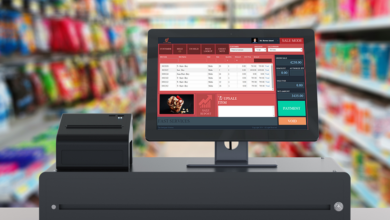What Is Education Application Development?

Education has evolved greatly in the digital age, and technology has played a significant role in transforming the traditional classroom experience. Education application development is one of the areas that has seen a lot of innovation in recent years, and it is changing the way we learn and teach. In this article, we will explore what education application development is, its benefits, and how it is transforming the education sector.
What is Education Application Development?
Education application development involves the creation of digital tools and software that are designed to enhance the teaching and learning process. These applications are developed to address the specific needs of students, teachers, and educational institutions, and can be used in various settings, including primary, secondary, and tertiary education.
Education application development is a specialized area of software development that requires a deep understanding of the education sector, including the needs of students and teachers, curriculum requirements, and the latest trends and best practices in education. Education application developers work closely with educators and educational institutions to create customized applications that are tailored to their unique requirements.
Benefits of Education Application Development
Education application development offers several benefits to students, teachers, and educational institutions. Here are some of the key benefits:
- Personalized Learning: Education applications can be customized to meet the unique needs of individual students. They can provide personalized learning experiences that cater to different learning styles, preferences, and abilities.
- Increased Engagement: Education applications can be designed to be interactive and engaging, which can motivate students to learn and participate more actively in the classroom.
- Improved Collaboration: Education applications can facilitate collaboration between students and teachers, as well as among students themselves. They can provide tools for group projects, online discussions, and peer-to-peer feedback.
- Enhanced Accessibility: Education applications can be used to make education more accessible to students with disabilities or those who are unable to attend physical classes. They can provide tools for remote learning, including video conferencing, online lectures, and virtual classrooms.
- Data-Driven Insights: Education applications can provide valuable data and insights into student performance, which can help teachers and educational institutions to identify areas for improvement and make data-driven decisions.
Examples of Education Applications
There are several types of education applications, each with their own unique features and functionalities. Here are some examples of popular education applications:
- Learning Management Systems (LMS): LMSs are web-based applications that are used to manage and deliver educational content. They provide tools for course creation, student registration, assignment submission, and grading.
- Educational Games: Educational games are designed to make learning more fun and engaging. They can be used to teach a wide range of subjects, from math and science to history and language arts.
- Assessment Tools: Assessment tools are used to evaluate student learning and progress. They can include quizzes, tests, and assignments, and can provide feedback to both students and teachers.
- Language Learning Apps: Language learning apps are designed to help students learn a new language. They provide interactive lessons, exercises, and quizzes, and can be used by students of all ages and skill levels.
- Virtual Reality (VR) and Augmented Reality (AR) Applications: VR and AR applications are used to create immersive learning experiences. They can be used to teach complex concepts, simulate real-world scenarios, and provide hands-on training.
Education Application Development Trends
Education application development is an ever-evolving field, and there are several trends that are shaping its future. Here are some of the key trends:
- Mobile Learning: With the rise of mobile devices, there is a growing demand for mobile learning applications. Mobile learning applications can be accessed from anywhere, at any time, and can provide a more convenient and flexible learning experience.
- Gamification: Gamification is the use of game elements, such as points, badges, and leaderboards , in educational applications to make learning more engaging and motivating. Gamification can help to increase student participation and retention by making learning feel like a game.
- Artificial Intelligence (AI): AI is being used in education applications to provide personalized learning experiences, automate administrative tasks, and analyze data. AI can help to identify areas for improvement and provide targeted feedback to students.
- Blockchain: Blockchain technology is being used in education applications to create secure and transparent systems for credential verification and storage. This can help to reduce fraud and increase trust in educational institutions.
- Social Learning: Social learning is the use of social media and online communities to facilitate collaboration and knowledge sharing. Social learning applications can provide a platform for students to connect with each other and learn from their peers.
Conclusion
Education application development is changing the face of education by providing innovative tools and technologies that enhance the teaching and learning experience. From personalized learning to virtual reality simulations, education applications are transforming the way we learn and teach. As the field continues to evolve, we can expect to see more exciting developments that will make education more accessible, engaging, and effective than ever before.


